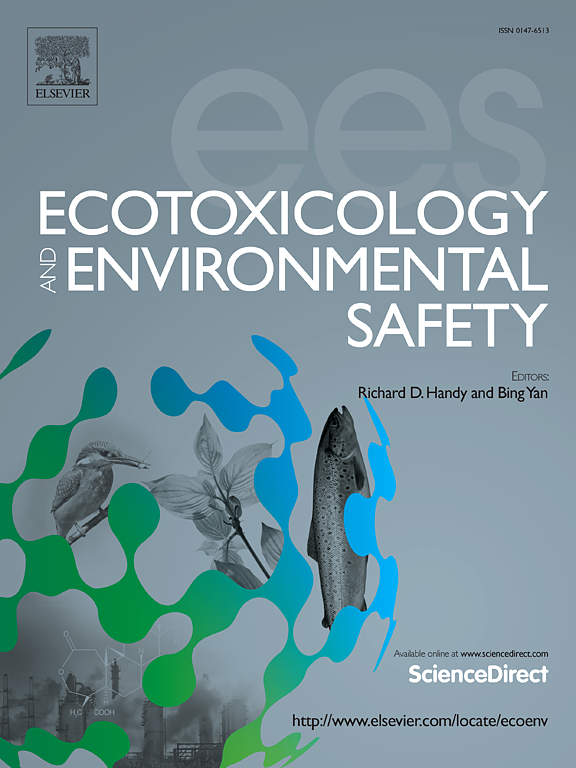BPS causes abnormal blastocyst development by inhibiting cell proliferation
IF 6.2
2区 环境科学与生态学
Q1 ENVIRONMENTAL SCIENCES
引用次数: 0
Abstract
In recent years, the escalating global utilization of bisphenol S (BPS) has raised growing concerns regarding its potential adverse effects on human health. However, the effects of BPS exposure on mammalian embryonic development and the associated molecular mechanisms remain inadequately characterized. In this study, we systematically investigated BPS toxicity in mouse embryogenesis by exposing embryos to graded concentrations (0–25 μg/mL). Our results demonstrated a dose-dependent impairment in early embryonic quality following BPS exposure. Specifically, treatment with 10 μg/mL and 15 μg/mL BPS significantly reduced blastocyst formation rates, diminished implantation potential, decreased total cell number of blastocysts, and caused cell fate determination imbalance. Mechanistic studies revealed that under BPS exposure, the massive accumulation of reactive oxygen species (ROS) in embryos induced cell cycle arrest and enhanced autophagy. It is worth noting that the reduction in the total cell number within blastocysts under BPS exposure manifested independently of the apoptotic pathway, as evidenced by the absence of upregulation in caspase 3/7 activity levels and TUNEL-positive signals. Our data collectively reveal that BPS disrupts early embryogenesis through ROS-driven cell cycle dysregulation and erroneous cell fate determination, culminating in compromised blastocyst developmental competence. This research unveils previously unrecognized mechanisms underlying BPS embryotoxicity, emphasizing essential parameters for evaluating chemical reproductive hazards in safety assessments.
求助全文
约1分钟内获得全文
求助全文
来源期刊
CiteScore
12.10
自引率
5.90%
发文量
1234
审稿时长
88 days
期刊介绍:
Ecotoxicology and Environmental Safety is a multi-disciplinary journal that focuses on understanding the exposure and effects of environmental contamination on organisms including human health. The scope of the journal covers three main themes. The topics within these themes, indicated below, include (but are not limited to) the following: Ecotoxicology、Environmental Chemistry、Environmental Safety etc.

 求助内容:
求助内容: 应助结果提醒方式:
应助结果提醒方式:


